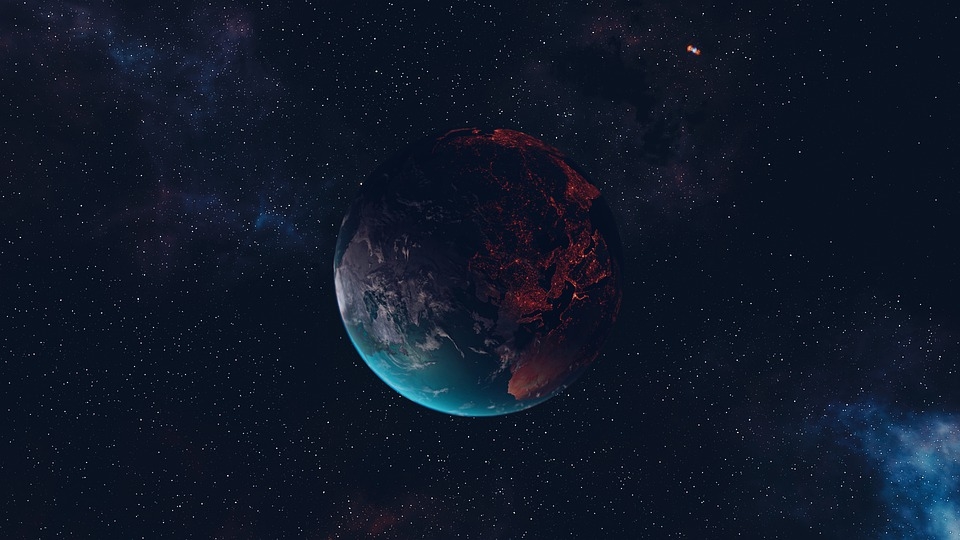There are thousands of exoplanets all over space and beyond our own Solar System and scientists at NASA are on the hunt to find a planet that would share the same attributes as our own. Previously, the agency’s scientists may have come across an exoplanet in the sweet spot known as the habitable zone that resembles Earth.
In the program “NASA’s Unexplained Files” on the Science Channel, one particular exoplanet caught the attention of the agency’s scientists in 2015. Through the now-retired Kepler Space Telescope that was already four years into its run at the time, they found an exoplanet within the distant Cygnus starfield. The exoplanet, as they found through analysis of the data sent by Kepler, was found within the “Goldilocks zone” or the habitable zone of its host star. The exoplanet was also found to be similar in size to our own Earth.
“We have this new batch of data down from the spacecraft,” shared astrophysicist Jessie Christiansen. “We’re all analyzing the data and Tom Barclay runs around to everyone’s offices and says “Have you seen this planet? It’s the one, the one we’ve been looking for.” It’s Earth-sized and in the habitable zone of its star -- everybody was extremely excited.”
The exoplanet, which has then been referred to as Kepler-186f, would become the first example of an exoplanet that’s about Earth’s size and in a habitable zone. But despite the similarity the planet has with Earth, Dr. Christiansen said that the exoplanet is more like “Earth’s cousin” as it orbits a different kind of star. The star that Kepler-186f orbits is described as an M dwarf star which is redder and cooler. The light from the star, therefore, would make the bodies of water that may be present on the planet look orange, and that vegetation may thrive because of the amount of light.
Aside from exoplanets, scientists are also looking towards the elusive Planet Nine. NASA and ESA’s Hubble Space Telescope may have provided a breakthrough for scientists as it was able to observe a distant star system with an exoplanet orbiting very far from its host star. The planet is formally referred to as HD106906b and has around 11 times the mass of Jupiter. Since its discovery, astronomers have been observing this planet for years to study its movements and what it orbits.



 Alpha, beta, theta: what are brain states and brain waves? And can we control them?
Alpha, beta, theta: what are brain states and brain waves? And can we control them?  Why is the universe ripping itself apart? A new study of exploding stars shows dark energy may be more complicated than we thought
Why is the universe ripping itself apart? A new study of exploding stars shows dark energy may be more complicated than we thought  Genetic diseases: How scientists are working to make DNA repair (almost) a piece of cake
Genetic diseases: How scientists are working to make DNA repair (almost) a piece of cake  Synthetic human embryos let researchers study early development while sidestepping ethical and logistical hurdles
Synthetic human embryos let researchers study early development while sidestepping ethical and logistical hurdles  The brightest object in the universe is a black hole that eats a star a day
The brightest object in the universe is a black hole that eats a star a day  The rising flood of space junk is a risk to us on Earth – and governments are on the hook
The rising flood of space junk is a risk to us on Earth – and governments are on the hook  What is minoxidil, the anti-balding hair growth treatment? Here’s what the science says
What is minoxidil, the anti-balding hair growth treatment? Here’s what the science says  If life exists on Jupiter’s moon Europa, scientists might soon be able to detect it
If life exists on Jupiter’s moon Europa, scientists might soon be able to detect it  How do airplanes fly? An aerospace engineer explains the physics of flight
How do airplanes fly? An aerospace engineer explains the physics of flight  Orbital resonance − the striking gravitational dance done by planets with aligning orbits
Orbital resonance − the striking gravitational dance done by planets with aligning orbits  Could a telescope ever see the beginning of time? An astronomer explains
Could a telescope ever see the beginning of time? An astronomer explains  The brain is the most complicated object in the universe. This is the story of scientists’ quest to decode it – and read people’s minds
The brain is the most complicated object in the universe. This is the story of scientists’ quest to decode it – and read people’s minds  The mystery of consciousness shows there may be a limit to what science alone can achieve
The mystery of consciousness shows there may be a limit to what science alone can achieve  Why some people don't trust science – and how to change their minds
Why some people don't trust science – and how to change their minds  Tatahouine: 'Star Wars meteorite' sheds light on the early Solar System
Tatahouine: 'Star Wars meteorite' sheds light on the early Solar System  Archeoastronomy uses the rare times and places of previous total solar eclipses to help us measure history
Archeoastronomy uses the rare times and places of previous total solar eclipses to help us measure history 






























